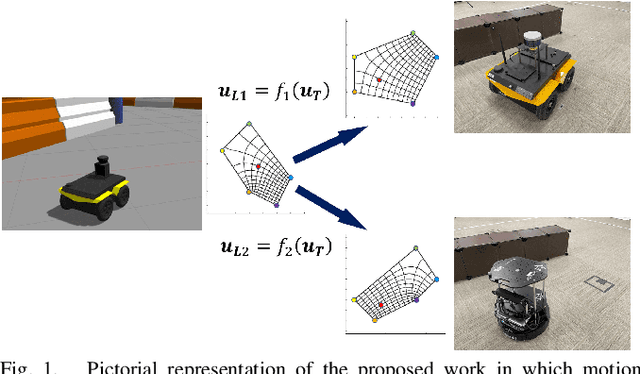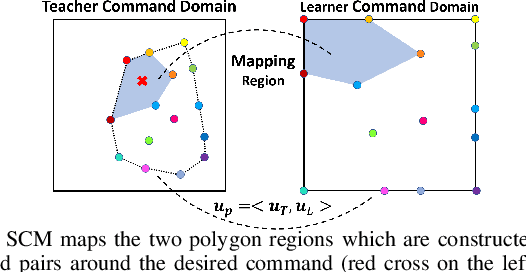A Conformal Mapping-based Framework for Robot-to-Robot and Sim-to-Real Transfer Learning
Paper and Code
Sep 19, 2021



This paper presents a novel method for transferring motion planning and control policies between a teacher and a learner robot. With this work, we propose to reduce the sim-to-real gap, transfer knowledge designed for a specific system into a different robot, and compensate for system aging and failures. To solve this problem we introduce a Schwarz-Christoffel mapping-based method to geometrically stretch and fit the control inputs from the teacher into the learner command space. We also propose a method based on primitive motion generation to create motion plans and control inputs compatible with the learner's capabilities. Our approach is validated with simulations and experiments with different robotic systems navigating occluding environments.
 Add to Chrome
Add to Chrome Add to Firefox
Add to Firefox Add to Edge
Add to Edge